Day 7 – Still in Reykjahlíð, using as base to explore Diamond Circle – 142 miles
Another grey, wet day. It’s chilly, mid-40s, with a breeze off the lake and the weather doesn’t look to improve. Fortunately we’re overnighting at the same camp site so it’s a welcome change to not pack-out wet gear. And it’s a conscious choice to run some of the gravel in the area on unladen bikes.
After making coffee and the usual breakfast of cheese, fish (a must if Warren’s riding with us), and bread, we agree to make for Dettifoss then on to Húsavík. There are two roads leading to the west and east sides of the falls. Each is dirt and gravel but look passable and become interesting past the falls. We’ve found three-digit dirt roads tend to be worse than two-digit ones but not as off-road as the F-roads (those prefixed with an “F” on the map). Figuring we can always turn around if it gets too rough and we’re heading east tomorrow by the same route, we make for the western side of Dettifoss.
We see more of the Moon to Mars and back landscape along the way. I’m perpetually amazed by this and have seen nothing like it anywhere in my travels.
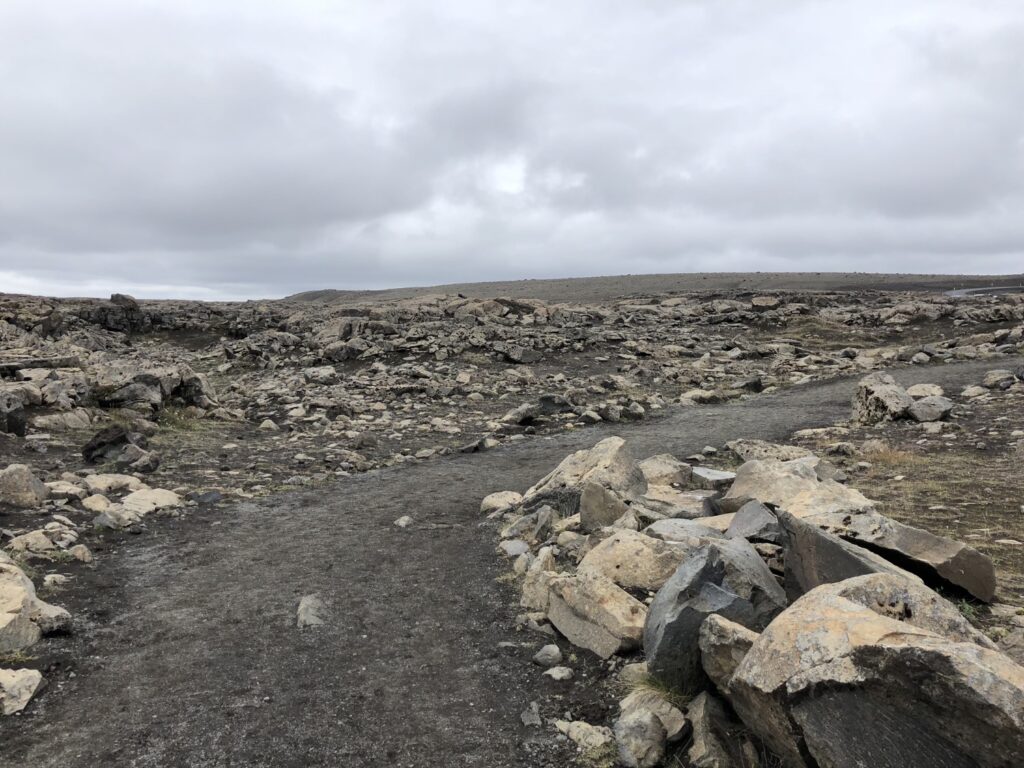
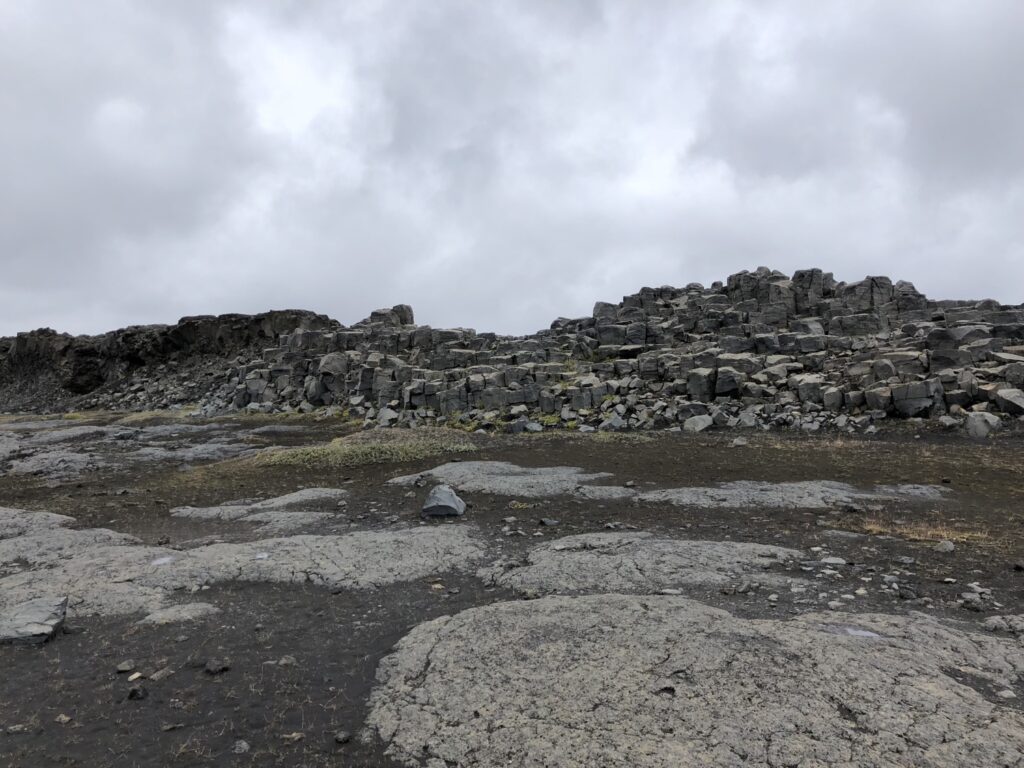
The lava fields are just stunning. It becomes clear as one passes which are older and which are newer, partly by colour, partly by vegetation, and partly by texture. While riding, I create a mental map of the flows and possible ages and they correspond to what we learn at the vistors’ center. We pass what look like small craters, covered in grass now, but closely aligned. At the visitor’s center, we learn what made them – lava entering a shallow lake caused mini explosions that leave the craters.
The road up to Dettifoss is the usual hard-packed gravel common in Iceland. We see the spray from both Dettifoss and Selfoss well in advance of arrival. You may know the falls from the opening sequence in the prequel Alienmovies. The lot is packed with tour buses but with bikes we’re able to park close to the trail. The bikes always attract attention with the most common question being “how’d you get them here?!” after they see the license plates.

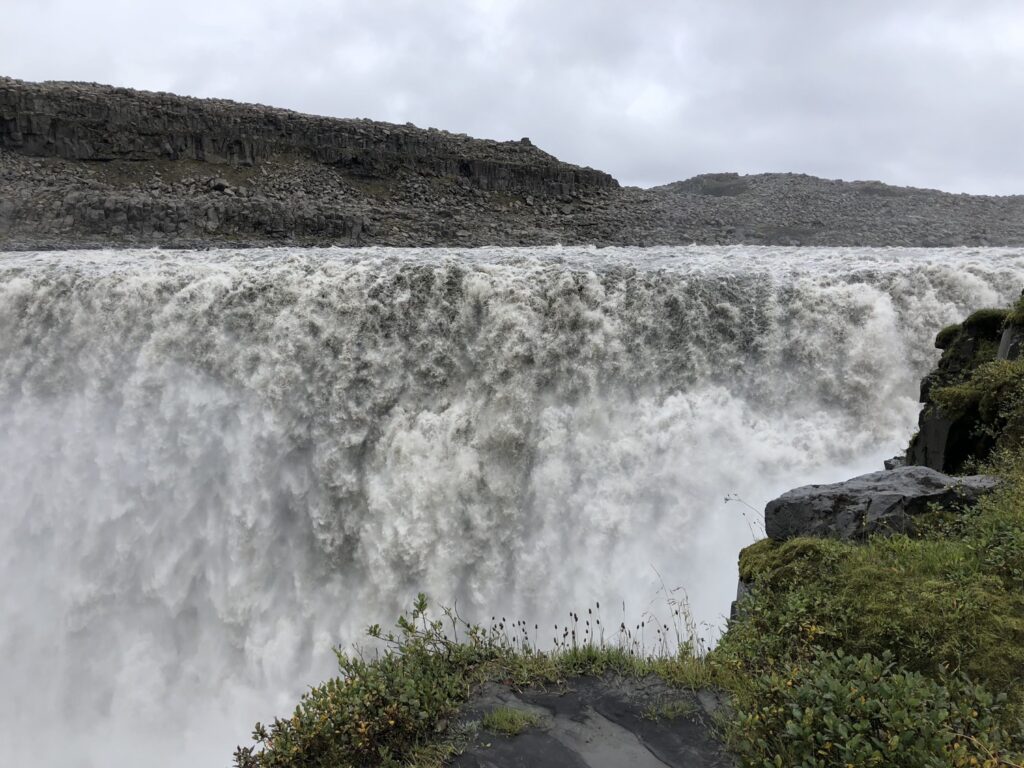
The hike in is about 1.5km across pretty barren but fascinating volcanic landscape. Here and there a flower takes root, the purple spray of arctic thyme being most common. Are we Riders of the Purple Arctic Sage? It’s a strenuous walk in full, armoured riding gear and heavy off-road boots but the views are worth it. I envy Steve in his one-piece Aerostich suit with its easy-on/easy-off, but it’s so cold none of us are shedding any layers. The view might be better from the eastern side; I could see people getting closer to the water. It was majestic here, so I can only imagine what it must be like during spring runoff. We decide the longer 2km hike to the smaller Selfoss was too far in gear.
We back off from following F862 past Dettifoss once we hit a construction detour that shunts the road to boggy ground. The big, heavy bikes are a handful in deep mud, we don’t know how long that goes, and Steve’s GS has basically street tires. So we turn around, back to the Ring Road heading west, then up 87 which promises to be a better road (fewer numbers!) with only a short section (25km or so) of gravel.
Or so we reasoned until we hit section of deep, big gravel in a construction zone along that dirt section. Not fun. The bikes dig in to the gravel and want to toss the front tire around. Not as much fun as other sections for sure. We make it through without dumping the bikes and decide not to come back that way, taking 845 to the west instead. It was cold riding across those highlands up to Húsavík, low 40s, warming back to the 50s as we approach the cost.
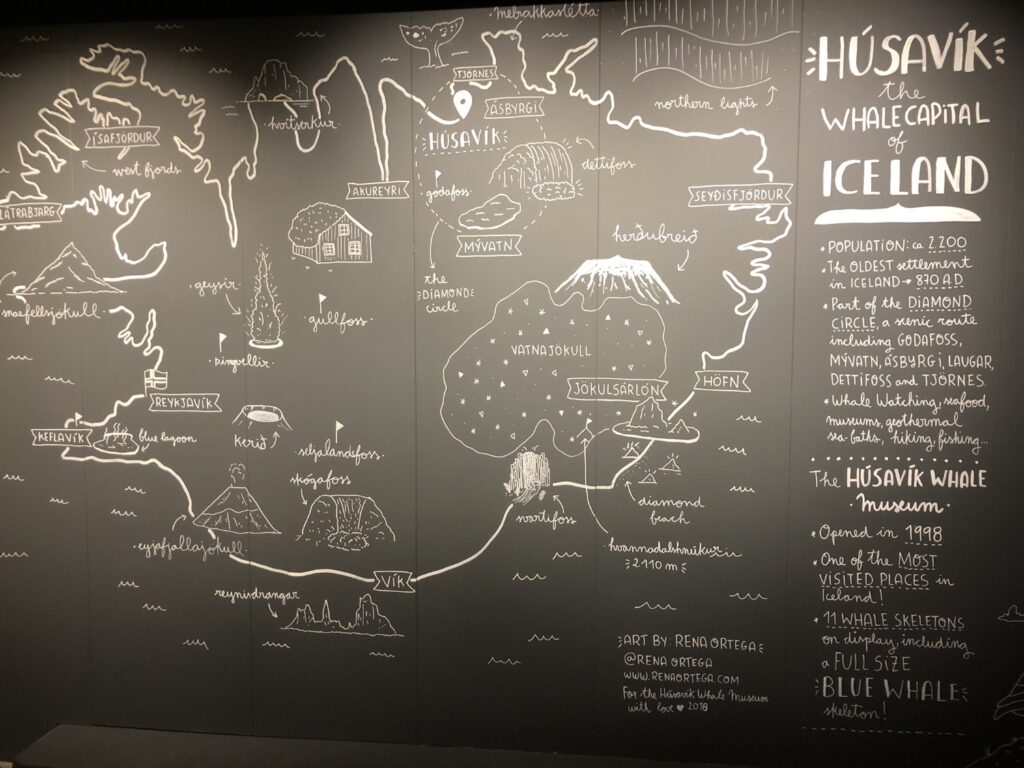
Húsavík is a small fishing town on Skjálfandi bay. It’s the site of the first settlement in Iceland and because of the variety of whale species in the bay it has become the self-proclaimed (but uncontested) whale watching capital of Iceland. They’ve re-tasked older, clinker-built sailing ships for the purpose too, lending to the ambience.
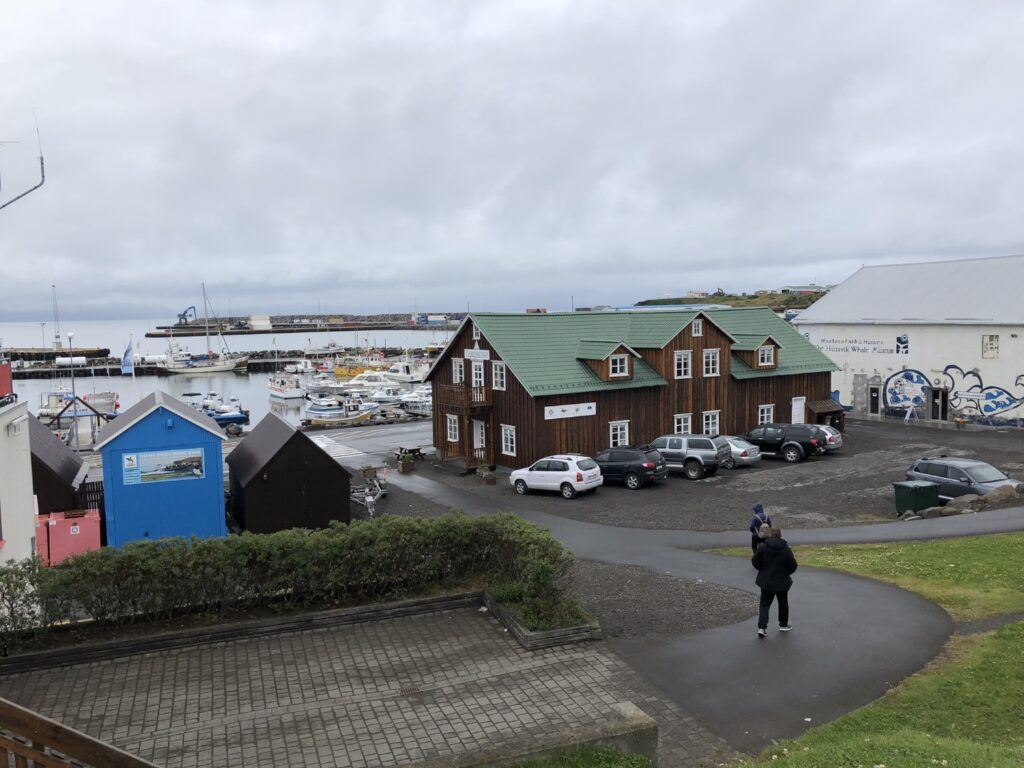
The Whaling Museum is comprehensive with all the specimens from beaches in Iceland, except for a narwhal from Greenland, which was hunted and used by the native population there. The disposition of beached whale carcasses was so important as a source of food and wealth to the early Icelandic settlers that accounts can be found in the sagas and rules created at the Althing. You can read about it in Jónsbók, the 13c codification of laws from the Commonwealth era. The whale laws are still in effect.
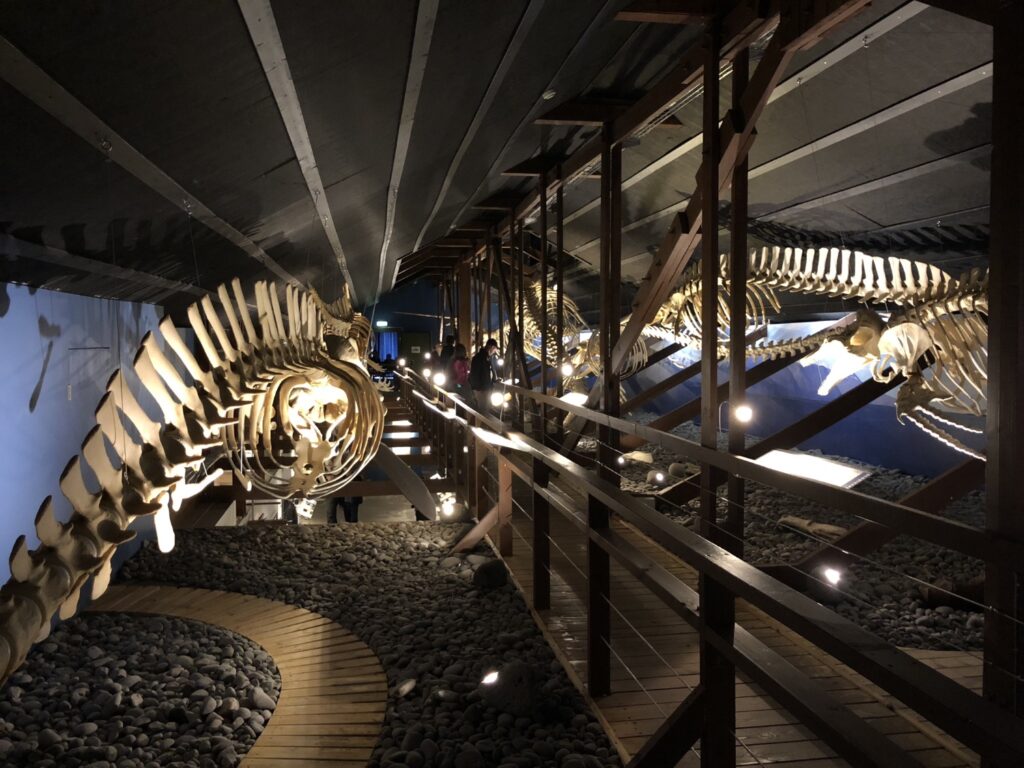
We lunch on cured lamb (a holiday delicacy in Iceland) and burgers at a very Nordic looking restaurant on the harbour. Afterwards, getting low on our whisky supply, we make for the vínbúðin, only open for two hours each day, and pick up an $82 bottle of Famous Grouse. Ouch. Finally succumbing to the cold, we check out the local clothing stores for wool hats and gloves. We didn’t see anything that beat the selection or prices at the market back in Reykjahlíð however so back towards camp for those (hence you’ll see classic Icelandic wool hats on Warren and Steve after this), more broth, and some juice for breakfast tomorrow.
Weather was cold and rainy on the ride back but we were warm and dry on the bikes and encountered no deep gravel construction zones.
Once back in camp we use the common cooking area where, despite the roof, we get little respite from precipitation due to condensation.
How can you spot Americans camping in Iceland? Flimsy tents that waterlog easily. Warren thought ahead and bought a more durable one, finding those they rent in Iceland in his research. Super lightweight three-season backpacking tents have a hard time keeping up with this weather. And I have a very well regarded one. Neither Steve nor I ever got wet but the rainfly gets pretty waterlogged. You really need a more waterproof (i.e., higher thread count and therefor heavier) four season tent in Iceland. They’re tunnel design against the wind, hooped, and have a real tarp for a rainfly that extends fully to the ground. That’s next on my gear list. After my sleeping pad.
Also different than camping in the states, the Europeans tend not to socialize around their tents, using instead the common cooking and congregating buildings supplied by the site. They leave early and arrive much later – near sunset – and seem to use the tents merely as a proxy for sleeping in a hotel room. My theory is that’s because they’re used to not having campfires to gather around. They also don’t seem to bring camp chairs, again probably because they’re not socializing around the campsite. Wonder what they would think camping American-style at one of our more “wilderness” sites.
Hot dogs for a non-rehydrated dinner tonight with American condiments, the individual serve packets having been stolen from gas stations in the States and staples in the camp kit. Pro tip – Warren, the connoisseur of canned fish products, claims the packing oil from smoked cod livers pairs perfectly with pysla.
The final miracle of the day? Note how many hot dogs come in a package and how many buns. What a civilized country.


